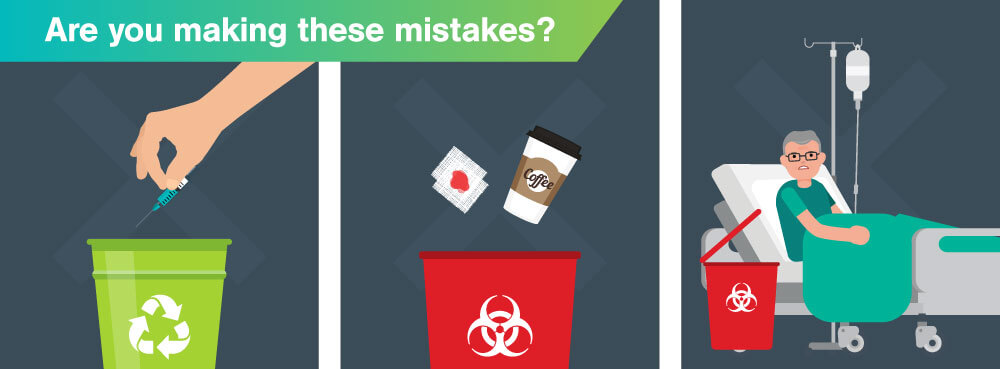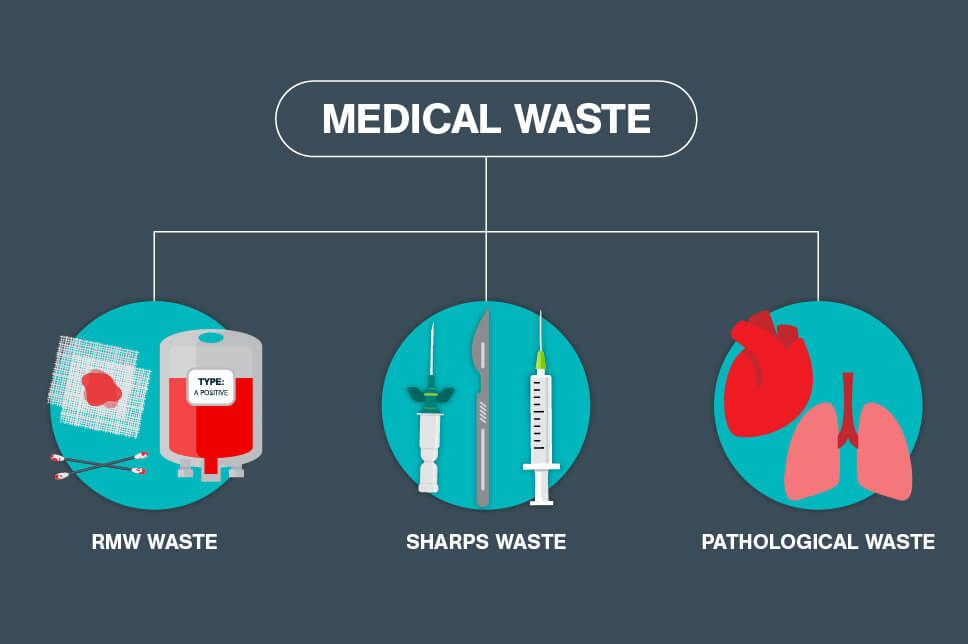Professional Medical Waste Disposal Service: Securing Your Facility and Community
Wiki Article
Efficient Methods of Medical Waste Disposal
Effective approaches of clinical waste disposal are critical in preserving public health and wellness and ecological safety. Clinical waste, including sharps, pathological waste, and pharmaceutical waste, have to be managed and gotten rid of properly to prevent the spread of infections and shield the setting. This needs adherence to strict regulations and the implementation of expert waste administration methods.Proper partition of clinical waste, protected and safe storage space, reliable therapy and disinfection methods, and environmentally-friendly disposal options are essential elements of an efficient medical garbage disposal system. Professional waste administration services play a crucial role in making certain conformity with policies and reducing the dangers connected with incorrect disposal. By using these techniques, health care facilities can add to a safer and cleaner setting while guarding the well-being of the area.
Proper Partition of Medical Waste
Proper segregation of clinical waste is important for ensuring the reliable and risk-free disposal of these possibly harmful products. Medical waste describes any kind of waste produced throughout health care activities, such as hospitals, centers, laboratories, and research study facilities. It includes a vast range of products, such as utilized needles, syringes, polluted dressings, expired or extra drugs, and biological products.By setting apart medical waste, health care facilities can reduce the risk of infections, injuries, and environmental contamination. The procedure involves categorizing waste into different kinds, such as sharps, transmittable waste, pharmaceutical waste, and non-hazardous waste. Each kind calls for details handling, product packaging, and disposal techniques to protect against exposure to health care employees, waste administration personnel, and the public.
To guarantee proper segregation, healthcare centers need to create clear guidelines and offer adequate training to personnel. This includes educating staff members on the different waste groups, proper packaging methods, and using ideal containers - WasteX Medical Waste Disposal. Additionally, clear signs and color-coding systems can be applied to promote the recognition and segregation of various waste kinds
Safe and Secure Storage Space of Medical Waste
Safe and safe and secure storage space of clinical waste is crucial for preserving the honesty and control of possibly hazardous products. Correct storage not only safeguards healthcare workers and the public from direct exposure to unsafe compounds but additionally avoids ecological contamination.To ensure risk-free storage, medical facilities ought to follow details guidelines. Firstly, waste must be stored in leak-proof and puncture-resistant containers that are classified properly. These containers must be tightly sealed to stop any leak or spills. In addition, the storage space location must be inaccessible and protected to unauthorized personnel, minimizing the threat of unintended exposure.
Correct segregation of clinical waste is additionally necessary for secure storage. Various sorts of waste, such as sharps, infectious materials, and pharmaceutical waste, must be separated to stop cross-contamination. This segregation can be attained through making use of color-coded bins or containers.
Normal tracking and inspection of the storage space location are essential to identify any kind of possible threats or violations. This consists of monitoring for signs of damage or degeneration in the containers, guaranteeing proper air flow, and keeping an eye on temperature and moisture degrees.
Efficient Therapy and Sanitation Approaches

One typically utilized therapy approach is autoclaving, which includes subjecting the waste to high-pressure heavy steam at temperature levels above 121 degrees Celsius. Another approach is incineration, which includes burning the waste at high temperatures.
Chemical disinfection is an additional effective method for dealing with clinical waste. This approach involves utilizing disinfectants such as chlorine substances, phenolic compounds, or hydrogen peroxide to eliminate or inactivate microorganisms (WasteX Medical Waste Disposal). Chemical disinfection is often used for fluid waste, such as lab samples or physical liquids
In the last few years, different therapy approaches such as microwave disinfection, irradiation, and organic treatment have likewise gained attention. These approaches provide benefits such as minimized environmental effect and power intake compared to standard approaches.
Environmentally-friendly Disposal Options
In the realm of clinical waste disposal, taking into consideration environmentally-friendly options is crucial. Health care facilities produce a considerable quantity of waste, including infectious products, drugs, and chemicals, which can pose significant risks to human health and the environment if not handled correctly. There are a number of environmentally-friendly disposal alternatives readily available that can help mitigate these dangers.
Recycling medical waste entails setting apart and processing certain products for reuse or repurposing. In addition, some health care centers have actually applied recycling programs for particular clinical gadgets or equipment, further decreasing waste generation.
One more environmentally-friendly disposal option is waste-to-energy conversion. This technique involves converting medical waste into energy with procedures like incineration or anaerobic food digestion. medical waste disposal. Incineration, when done effectively with advanced innovations, can create energy while minimizing unsafe emissions. Anaerobic food digestion, on the other hand, breaks down organic waste in the lack of oxygen, generating biogas that can be used for electricity or warm generation.

Benefits of Specialist Waste Monitoring Provider
One considerable advantage of professional waste monitoring services is the improved effectiveness in getting rid of and managing of clinical waste. Healthcare centers generate a considerable amount of waste that consists of dangerous products, such as sharp objects, polluted items, and possibly transmittable waste. medical waste disposal service. Incorrect handling and disposal of clinical waste posture severe wellness risks to staff members, patients, and the public. By using professional waste management services, medical care facilities can make sure that all medical waste is dealt with and dealt with properly, minimizing the threat of contamination and the spread of diseases.Expert waste monitoring services employ experienced and trained workers who are educated regarding the laws and guidelines for medical garbage disposal. They have accessibility to specific tools and devices that allow them to manage different kinds of clinical waste securely and successfully. These services likewise have reputable treatments and procedures in position to ensure that waste is set apart, packaged, transferred, and disposed of in compliance with regional, state, and government policies.
Moreover, professional waste monitoring solutions can give health care facilities with extensive waste monitoring options. They can provide solutions such as waste collection, therapy, transport, and disposal, customized to the details demands and demands of the center. This removes the burden of taking care of waste internally, allowing medical care staff to concentrate on providing quality patient treatment.
Verdict
In conclusion, effective methods of clinical waste disposal involve appropriate partition, safe storage space, treatment and disinfection, and environmentally-friendly disposal options. These techniques make sure the risk-free handling and management of medical waste, protecting against the spread of infections and protecting the environment.Clinical waste, consisting of sharps, pathological waste, and pharmaceutical waste, must be managed and disposed of correctly to protect against the spread of infections and safeguard the atmosphere.Proper segregation of medical waste, safe and protected storage, efficient therapy and disinfection approaches, and environmentally-friendly disposal choices are vital elements of an efficient medical waste disposal system. The procedure entails categorizing waste right into various types, such as sharps, transmittable waste, pharmaceutical waste, and non-hazardous waste. By making use of professional waste monitoring services, Visit Your URL health care centers can guarantee that all medical waste is taken care of and disposed of correctly, lessening the threat of contamination and the spread of conditions.
Specialist waste monitoring solutions utilize experienced and trained personnel that are knowledgeable regarding the regulations and guidelines for clinical waste disposal.
Report this wiki page